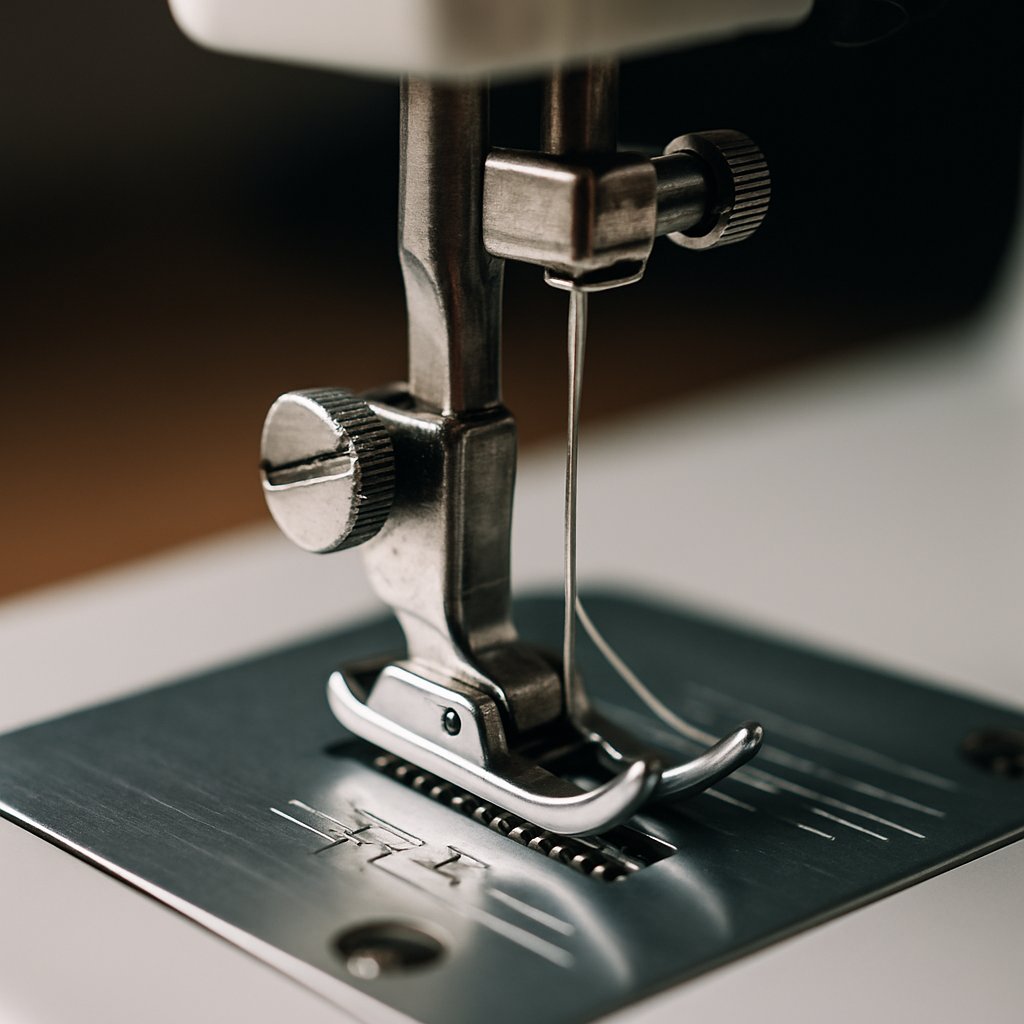Sewing Machine Needles: Types, Sizes, and How to Pick the Right One
Small part, big impact. The right needle protects your fabric, improves stitch quality, and saves you from skipped stitches and snags.

What makes a needle work
A sewing machine needle looks simple, but each part has a job. The shank locks into the machine (flat side usually faces the back). The shaft carries the thread down, the groove protects the thread on the way through fabric, the eye lets the thread pass, the scarf gives your hook room to grab the loop, and the point does the piercing. When those pieces are matched to your fabric and thread, stitches look clean and your machine runs quieter.
Types and when to use them
| Type | Point / Feature | Best For |
|---|---|---|
| Universal | Slightly rounded point | Everyday woven fabrics, light knits |
| Ballpoint (Jersey) | Rounded tip slides between loops | Knit tees, rib knit, jersey—prevents runs/snags |
| Stretch | Modified scarf to avoid skipped stitches | Highly elastic knits, swimwear, activewear |
| Microtex / Sharp | Very slim, acute point | Silk, microfiber, fine wovens, precise topstitching |
| Denim / Jeans | Reinforced shaft, sharp point | Denim, canvas, twill, multiple layers |
| Leather | Wedge (cutting) point | Leather and heavy vinyl (not knits) |
| Embroidery | Larger eye, special scarf | Rayon/poly embroidery threads; fewer breaks |
| Quilting | Tapered point for thickness | Piecing and free-motion over batting |
| Topstitch | Large eye & groove | Heavy threads; bold decorative seams |
| Twin / Double | Two needles on one shank | Parallel hems, pintucks, coverstitch-like finish |
Sizes explained (metric vs US)
Needle sizes show up as metric/US, like 80/12. Bigger numbers mean thicker, stronger needles. Use this as a starting point and test on scrap:
| Metric / US | Typical Fabrics | Thread Pairing |
|---|---|---|
| 60/8 – 70/10 | Silk, chiffon, organza, batiste | Fine poly or cotton 60–80 wt |
| 75/11 – 80/12 | Quilting cotton, poplin, linen blends | All-purpose polyester 40–50 wt |
| 90/14 | Denser wovens, light canvas, twill | Stronger all-purpose or topstitch thread |
| 100/16 – 110/18 | Heavy denim, canvas, upholstery | Upholstery/topstitch threads |
Signs you’re using the wrong needle
- Skipped stitches on knits → switch to Stretch or Ballpoint.
- Puckering on fine wovens → size down or use Microtex.
- Thread shredding with rayon/poly → try an Embroidery needle.
- Audible popping → needle is dull, bent, or too sharp for the fabric.
- Birdnesting underneath → rethread, then try a fresh needle matched to fabric.
Replacement and care
Don’t wait for disaster. Many sewists change needles every 6–8 hours of sewing—or at the start of each project. Hit a pin? Replace immediately. Store packs by type and size so you can grab the right one quickly. Keep a universal 80/12 for day-to-day and a small kit of specialty needles (Stretch, Microtex, Denim) for tricky fabrics.
Fast answers (FAQ)
Which needle should beginners buy first?
A universal 80/12 is a safe default for quilting cotton and many wovens. Add Stretch for knits and Microtex for fine fabrics.
How do I know the needle is installed correctly?
Flat side of the shank usually faces the back; push it fully up before tightening the screw.
Why do my stitches skip on stretchy fabric?
Use Stretch or Ballpoint. A universal point can cut loops and miss the hook timing on knits.
Where to buy
Ready to stock up on essentials (Universal 80/12, Stretch, Microtex, Denim)? Check current prices and multipacks.
Buy Needles on Amazon
Leave a Reply